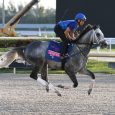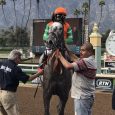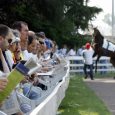By Mike Farrell
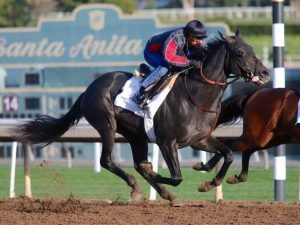
Santa Anita Park – Photo by Zoe Metz.
The chill in the morning air in the Northeast and the Midwest serves as a reminder that winter racing will soon be here.
The lucky racing outfits from those regions have already decamped to Florida, Louisiana or Arkansas. Those who remain are already zipping their jackets higher and closer to their necks.
Biting chill is never a concern in sunny Southern California where change is also in the air. Each day off the calendar brings us closer to Dec. 26, and the reopening of Santa Anita.
The return of “The Great Race Place” should be cause for celebration. But, nobody is in a jovial mood this time, not after last winter’s horrendous rash of breakdowns that sent shivers through the entire industry
Last winter at Santa Anita threw the sport into turmoil and the repercussions are still reverberating. There were several developments on that front over this past week.
It started with the announcement of the Thoroughbred Safety Coalition spearheaded by The Stronach Group, Churchill Downs, the New York Racing Association, Del Mar, Keeneland and the Breeders’ Cup.
The goal, according to the introductory press release, is “an industry led effort to unify and enhance protections and work together to develop new reforms to ensure the safety of the sport’s equine and human athletes.”
Can’t argue with that. A full list of proposed measures can be found at www.thoroughbredsafetycoalition.com/reforms.
All of the precautions in the world, however, won’t prevent breakdowns. We saw that earlier this month at the Breeders’ Cup. The most scrutinized, inspected and supervised event in the history of racing could not prevent Mongolian Groom’s fatal injury in the Classic.
The safety record must be improved and TSC offers some interesting ideas including expansion of the “voided claim” rules, out of competition testing and mandatory report filings by private veterinarians to the local regulators.
The “voided claim” rule is one of the best ways to keep unfit horses off the racetrack. Owners entered claims on horses prior to a race and, under the old traditional standard, the new owner took possession after the race regardless of what unfolded. You got the horse, sound or injured, dead or alive.
Unscrupulous trainers and owners would often “dump” sick or injured horses, running them for discounted claiming prices in hopes of palming them off on someone else.
The “voided claim” rule prevents the transfer of ownership if a horse is injured in the race, a veterinarian certifies the horse is lame or the horse tests positive for a banned substance.
Good for the new owner. Good for the game.
Out of competition testing allows the regulator, usually the state racing commission, to test any horse in training at any time to determine what drugs are being used. Random tests could be conducted at all racetracks and licensed training centers.
The most radical and potentially impactful measure would require every vet to file a daily report on all treatments and all therapies for every horse. Making that information available to the regulators, and perhaps the public, could be a real game changer.
While many of the outlined goals are noble, the path to implementation is murky. Racing lacks a national governing body and each state imposes its own sets of rules. It could be a long and difficult road, unless the federal government decides to jump in with national legislation and regulation.
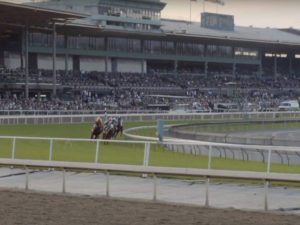
Santa Anita Park.
Of more immediate impact, the Californian Horse Racing Board met Thursday and approved the upcoming Santa Anita meet with several strings attached.
It could be a very brief season, if Southern California sees a repeat of last year’s unusually wet winter.
Dr. Greg Ferraro, the newly elected chairman of the CHRB, made it clear that the dates approval was contingent upon the track closing for training and racing during inclement weather.
The CHRB also raised the minimum claiming level to $10,000. That should have only a minimal impact as Santa Anita rarely carded $8,000 claimers.
The CHRB postponed until its December meeting consideration of restrictions on the use of whips by jockeys.
Santa Anita has also taken several actions, independent of the CHRB. Lasix will not be permitted for 2-year-old races next season, and sprints will no longer be run on the downhill turf course.

